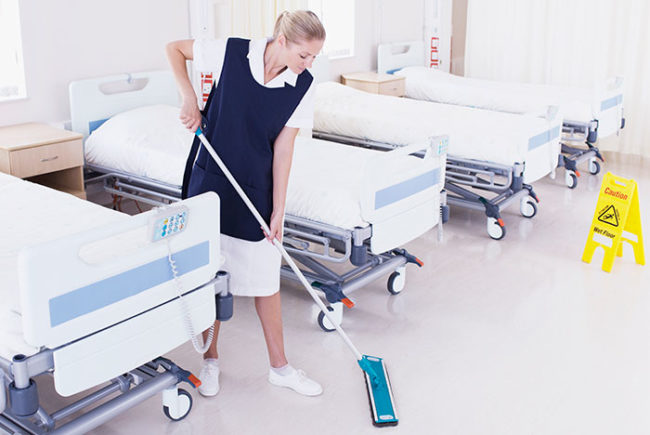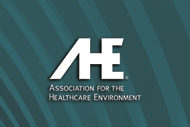A high percentage of hospitals today are utilizing Press Ganey to measure their level of success in providing customers with the best patient experience. Although the surveys measure a wide range of interactions, from the quality and temperature of the food to the communication and skill of the physician, one section that is paramount to the success and safety of the organization is the hospital environment. Just what does it take to ensure that the health care consumer is treated in a facility that provides a clean, quiet and safe place to receive care?
The first step is to develop an environmental services department where employees feel valued and respected. The leader must be a true mentor with the ability to empower his or her staff to take pride in themselves and their work, and to push through adversity to advocate for their patients. The high-performing manager will hire based on fit within the culture they are trying to foster versus simply filling the position with “a warm body.” Accountability management must be consistent and fair to cultivate trust and engagement throughout all department levels. Additionally, this leader must be adept at putting the right person in the right place at the right time.
These employees have a huge responsibility to succeed in a position that is labor-intensive, requires attention to detail and is often a rather thankless job. Capitalize on their strengths and talents. For example, if some employees have difficulty relating to patients, consider having them clean in an off-hours area or work on the discharge team where their cleaning skills can stand out and they will not be as involved with interpersonal communication. If there is an inpatient unit that requires two employees to perform the daily cleaning detail, consider assigning techs who have a strong and positive working relationship with each other. Use your resources wisely and in such a way that it is a win-win for the facility and staff.
Health care facilities that score high in customer service have learned that it takes a culture in which every employee, from the top down, is engaged in keeping the facility clean and safe. That is what it takes! Now, go forth and build your team; educate and strengthen your leaders, empower your employees, and cultivate a culture of accountability and top-down cooperation. Your return on investment will be an organization where employees want to work, consumers want to receive care and physicians want to practice.
Marci Butts is director of ancillary and support services at the Jewish Hospital–Mercy Health, Cincinnati.
Practice guidance available
Practice Guidance for Healthcare Environmental Cleaning, second edition, helps to define and advance the professionals responsible for care of the health care environment to ensure high-quality outcomes and healthy communities. This manual provides evidence-based research, guidance and recommended practices that should be considered for inclusion in health care environmental services departments. Because each facility has its own needs, this resource has been designed to enhance an existing program. For more information, visit www.ahe.org/ahe/learn/tools_and_resources/publications.shtml.
Certified Healthcare Environmental Services Technician Certificate
This certification focuses on critical areas of competency for front-line technicians, including infection prevention, quality of care, patient outcomes and experience. For more information, visit www.ahe.org/ahe/lead/CHEST/chest_home.shtml.
Environmental Sustainability Certificate Program
AHE has launched a certification to acknowledge the environmental and ecological sustainability efforts of environmental services departments. For more information, go to www.ahe.org/ahe/lead/environmental_sustainability_ certificate_program.shtml.





